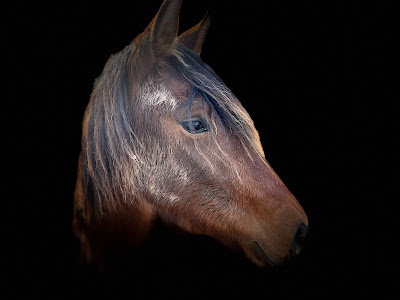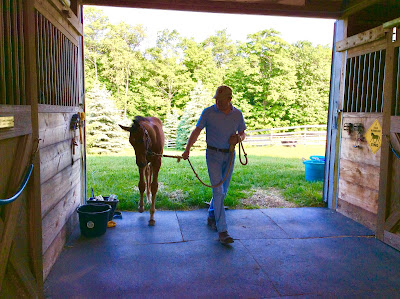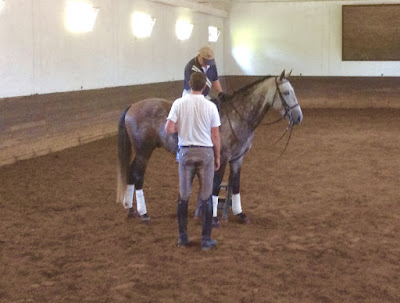Spring is nearly here and with it comes a bevy of farm jobs that need to be completed before the season picks up pace.

Spring Time Is Horse Spa Time
As horse owners we all look forward to our equines' shed of winter coats and 'getting our groom on' to ensure our wee beasties are shiny and clean for the likely uptick in under saddle work. While our horses do their bit to groom each other, they do need out help!
 |
| Horses Do Need Help Shedding Winter Coats |
But while tidying the barn, cleaning tack, grooming horses and preparing for the better riding weather is likely on the Spring check list, don't overlook the importance of giving your barn a Spring makeover and clean up too.
While washing down the stalls and doing a deep clean may be a few months away for those of us that enjoy the cooler North-East climate - this is a perfect time for removing dust and cobwebs (especially off light fixtures), cleaning down windows, repairing window screens for the busy bug season that is coming and making a few fence repairs.
A key area of the barn spa treatment that is often overlooked is the hay storage area. Loose hay will form a carpet in the hay storage area, and cleaning it out is a necessity if you don't want to contaminate the new hay crop when it becomes available. As your hay stock supplies are likely rapidly diminishing, the Spring is a great time to do a thorough clean out.
Sure, you may have diligently raked and brushed out the space during the winter months as the haystack receded, but it is also important to go deeper. If you use tarpaulins or pallets, they need to be removed. Underneath you will likely discover evidence of rodent life. You may find a layer of mold infused moisture and composting hay that has made its way through crevices to the bottom layer.
Once raked and cleaned, the floor beneath may have patches of dampness that will benefit from being left a few days to thoroughly dry out. A concrete floor can be vacuumed with a Shop Vac. It is always better to use a vacuum rather than broom sweep and brush dust and detritus about, for obvious reasons.
Lime can be added to dirt floor areas to soak up any odors and freshen the ground, before placing tarpaulins or pallets back. Before replacing tarpaulins wash them off and set them to dry outside in the sun to help remove any toxins from their surface. When tarpaulins are laid out flat on the ground remember to secure them to prevent a strong wind sending them airborne.
A clean hay stall or storage area is essential if you don't want to contaminate good hay. Hay is increasingly expensive, and buying good quality hay is important but so is keeping it that way.
If you store your hay supply in a large building, similar tidying up and cleaning out is necessary.
Clean Up Time!
If you home produce hay then you have hopefully already cleaned and serviced all the equipment and brushed out the hay wagons ready for use before the winter arrived.
Cleaning out hay wagons after each use will help them last longer!
Hay harvesting weather will be here before we know it, and getting ahead of the preparations is better done now rather than leaving everything to the last minute.
Hay Harvesting Time Will Soon Be Here
And don't forget to clean up the pasture too. Hay left sitting around hay feeders, left loose on the ground will soon become a mire of manure and mud which you will find yourself cleaning up off your horses.
What They Don't Eat Needs Cleaning Up
A clean and tidy pasture is all part of horse management. And when the proper Spring riding weather arrives you'll be all set to get out and ride rather than cleaning the barn.
And when it comes to restock your hay, you know you won't be wasting your new hay supplies before you even get started by having them contaminated with last year's hay.
 | |
| A pasture at Willowview Hill Farm, Stamford, NY |
And don't forget that buying your hay supply early in the year, especially off the wagons is a great way to save money. When supply is plentiful prices will be lower and you will also have a better choice of hay from which to select.










































